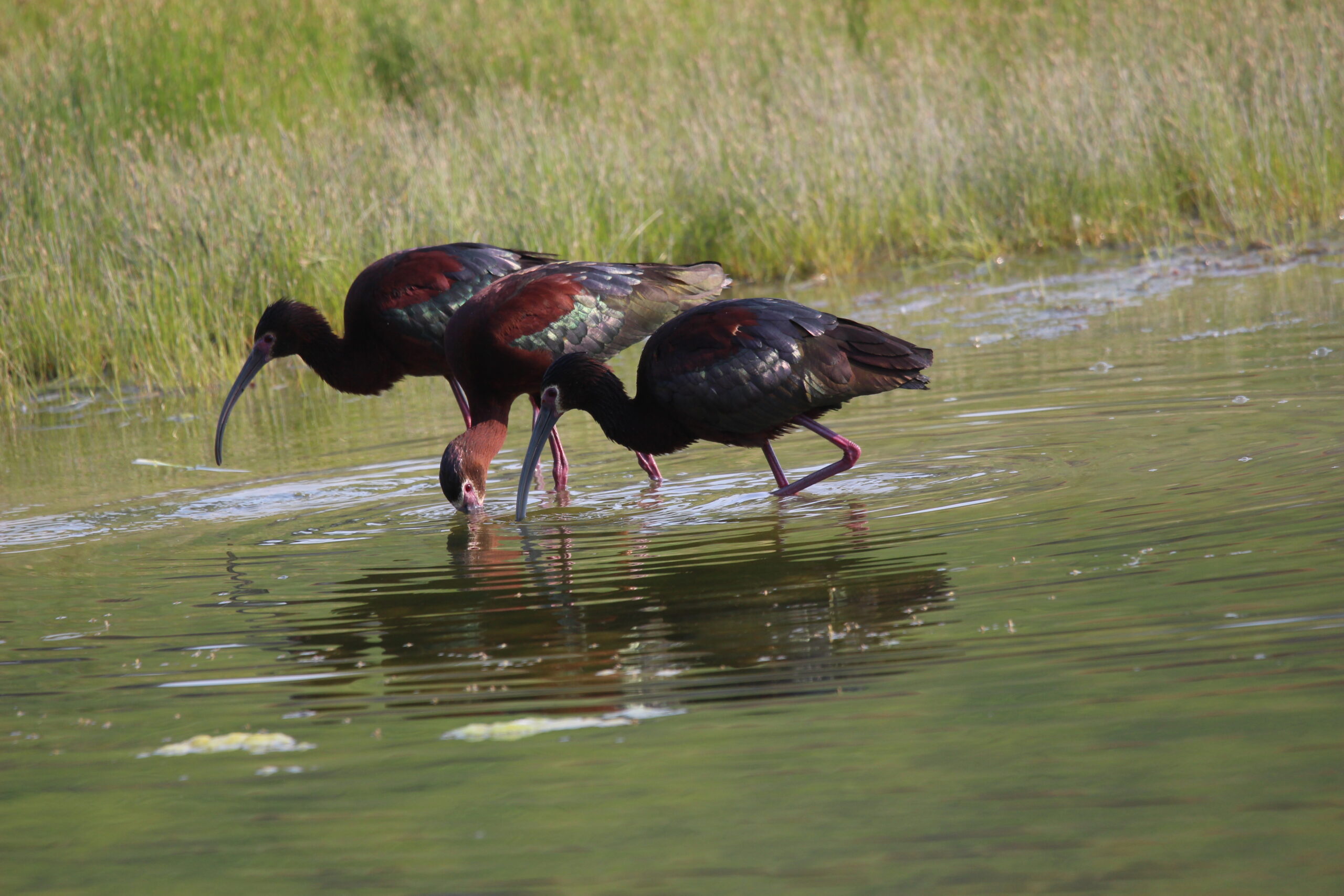Often ignored due in part to its abundance at certain times of the year, the Ring-billed Gull is one of sixteen species of gulls that visit Alberta. With their arrival in spring along the shores of Lake Chestermere, exploring that shoreline and melted shallows for food, the Ring-billed Gulls eventually head off to create a new generation in suitable locations. In the last half of August our Ring-billed Gulls return to the beaches of Centennial Park and the lawn by our recreation centre.
Adult Ring-bills can be easily identified as they do indeed have a black ring around the bill, coupled with yellow legs, beak and eyes, with the eyes enhanced with red rims. Juveniles though can be confused with Herring Gulls as they they sport dark wingtips and tail, paired with with plumage which is well spotted with brown spots or flecks. Entering their second year, these young gulls look more like their parents, taking three years to reach breeding plumage.
You may wonder why gulls may gather onto the grassy areas of the the recreation centre. An omnivore by habit and practice, virtually anything edible is of interest to the Ring-billed. Consuming fish, dragonflies, insects, grain, leftover human food, blueberries and cherries, these gulls have one creative technique to add nutrition. Gulls will simulate the sounds of raindrops falling on the grass by rhythmically stomping their feet. Imagine watching a coordinated flock of gulls working together to literally raise breakfast from the soil.
Ring-bills are a highly social bird, gathering in colonies that can number from a few dozen to thousands of pairs. Protection in numbers is a useful strategy. These gulls have two alarm calls to inform fellow colony members of any potential predators. A softer, mew like call is used in non-threatening communications, including the courtship phase of each year. When feeling aggressive, the Ring-billed gull will lower its head, bellow out a call or two followed by raising its head. At times you may see the cranky gull take a short run at another to amplify its displeasure.
Although we see hundreds of gulls in flocks at this time of year, back in the late 19th century, these gulls were hunted for their feathers, proudly connected to hats then in style. Coupled with human encroachment on breeding sites, this often ignored gull was in danger. Fortunately for the Ring-billed gulls, human garbage dumps, fast foods tossed onto streets and parking lots, as well as insects and grain on farm fields have helped this species to not only survive but rebound in number.
As our days grow shorter, gulls prepare to migrate to the central United States and Mexico to over winter. Be it at our local beach, recreation centre, or the shallows and gravel bars of the Bow River, there’s a chance to get a glimpse of these most gregarious survivors and yes, thrivers who have adapted to the human condition.
The Gulls Are Back in Town

In response to Canada's Online News Act and Meta (Facebook and Instagram) removing access to Canada's local news from their platforms, Anchor Media Inc encourages you to get your news directly from your trusted source by bookmarking this site and downloading the Rogue Radio App. Send your news tips, story ideas, pictures, and videos to info@anchormedia.ca.




